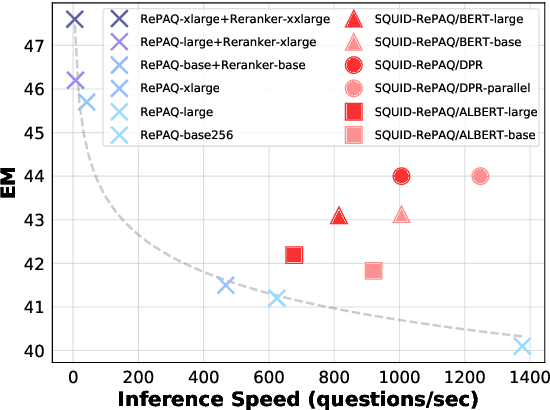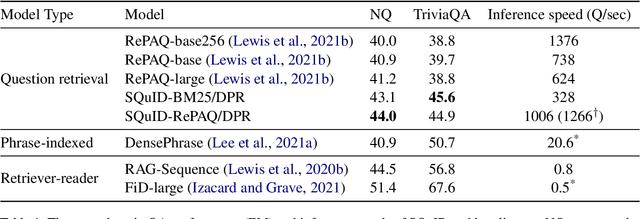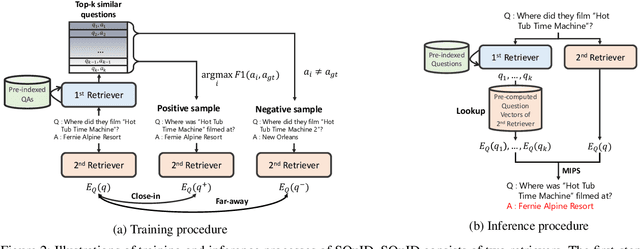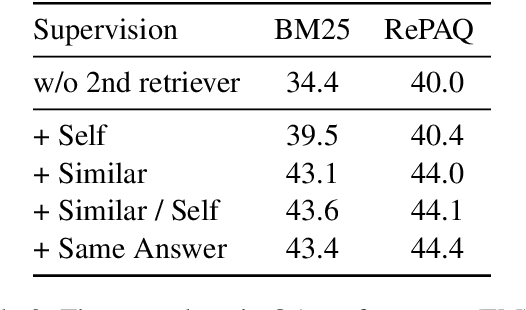Yeon Seonwoo
Perceptions to Beliefs: Exploring Precursory Inferences for Theory of Mind in Large Language Models
Jul 09, 2024Abstract:While humans naturally develop theory of mind (ToM), the capability to understand other people's mental states and beliefs, state-of-the-art large language models (LLMs) underperform on simple ToM benchmarks. We posit that we can extend our understanding of LLMs' ToM abilities by evaluating key human ToM precursors -- perception inference and perception-to-belief inference -- in LLMs. We introduce two datasets, Percept-ToMi and Percept-FANToM, to evaluate these precursory inferences for ToM in LLMs by annotating characters' perceptions on ToMi and FANToM, respectively. Our evaluation of eight state-of-the-art LLMs reveals that the models generally perform well in perception inference while exhibiting limited capability in perception-to-belief inference (e.g., lack of inhibitory control). Based on these results, we present PercepToM, a novel ToM method leveraging LLMs' strong perception inference capability while supplementing their limited perception-to-belief inference. Experimental results demonstrate that PercepToM significantly enhances LLM's performance, especially in false belief scenarios.
CS1QA: A Dataset for Assisting Code-based Question Answering in an Introductory Programming Course
Oct 26, 2022Abstract:We introduce CS1QA, a dataset for code-based question answering in the programming education domain. CS1QA consists of 9,237 question-answer pairs gathered from chat logs in an introductory programming class using Python, and 17,698 unannotated chat data with code. Each question is accompanied with the student's code, and the portion of the code relevant to answering the question. We carefully design the annotation process to construct CS1QA, and analyze the collected dataset in detail. The tasks for CS1QA are to predict the question type, the relevant code snippet given the question and the code and retrieving an answer from the annotated corpus. Results for the experiments on several baseline models are reported and thoroughly analyzed. The tasks for CS1QA challenge models to understand both the code and natural language. This unique dataset can be used as a benchmark for source code comprehension and question answering in the educational setting.
Ranking-Enhanced Unsupervised Sentence Representation Learning
Sep 21, 2022



Abstract:Previous unsupervised sentence embedding studies have focused on data augmentation methods such as dropout masking and rule-based sentence transformation methods. However, these approaches have a limitation of controlling the fine-grained semantics of augmented views of a sentence. This results in inadequate supervision signals for capturing a semantic similarity of similar sentences. In this work, we found that using neighbor sentences enables capturing a more accurate semantic similarity between similar sentences. Based on this finding, we propose RankEncoder, which uses relations between an input sentence and sentences in a corpus for training unsupervised sentence encoders. We evaluate RankEncoder from three perspectives: 1) the semantic textual similarity performance, 2) the efficacy on similar sentence pairs, and 3) the universality of RankEncoder. Experimental results show that RankEncoder achieves 80.07% Spearman's correlation, a 1.1% absolute improvement compared to the previous state-of-the-art performance. The improvement is even more significant, a 1.73% improvement, on similar sentence pairs. Also, we demonstrate that RankEncoder is universally applicable to existing unsupervised sentence encoders.
Two-Step Question Retrieval for Open-Domain QA
May 19, 2022



Abstract:The retriever-reader pipeline has shown promising performance in open-domain QA but suffers from a very slow inference speed. Recently proposed question retrieval models tackle this problem by indexing question-answer pairs and searching for similar questions. These models have shown a significant increase in inference speed, but at the cost of lower QA performance compared to the retriever-reader models. This paper proposes a two-step question retrieval model, SQuID (Sequential Question-Indexed Dense retrieval) and distant supervision for training. SQuID uses two bi-encoders for question retrieval. The first-step retriever selects top-k similar questions, and the second-step retriever finds the most similar question from the top-k questions. We evaluate the performance and the computational efficiency of SQuID. The results show that SQuID significantly increases the performance of existing question retrieval models with a negligible loss on inference speed.
Weakly Supervised Pre-Training for Multi-Hop Retriever
Jun 18, 2021



Abstract:In multi-hop QA, answering complex questions entails iterative document retrieval for finding the missing entity of the question. The main steps of this process are sub-question detection, document retrieval for the sub-question, and generation of a new query for the final document retrieval. However, building a dataset that contains complex questions with sub-questions and their corresponding documents requires costly human annotation. To address the issue, we propose a new method for weakly supervised multi-hop retriever pre-training without human efforts. Our method includes 1) a pre-training task for generating vector representations of complex questions, 2) a scalable data generation method that produces the nested structure of question and sub-question as weak supervision for pre-training, and 3) a pre-training model structure based on dense encoders. We conduct experiments to compare the performance of our pre-trained retriever with several state-of-the-art models on end-to-end multi-hop QA as well as document retrieval. The experimental results show that our pre-trained retriever is effective and also robust on limited data and computational resources.
Context-Aware Answer Extraction in Question Answering
Nov 05, 2020



Abstract:Extractive QA models have shown very promising performance in predicting the correct answer to a question for a given passage. However, they sometimes result in predicting the correct answer text but in a context irrelevant to the given question. This discrepancy becomes especially important as the number of occurrences of the answer text in a passage increases. To resolve this issue, we propose \textbf{BLANC} (\textbf{BL}ock \textbf{A}ttentio\textbf{N} for \textbf{C}ontext prediction) based on two main ideas: context prediction as an auxiliary task in multi-task learning manner, and a block attention method that learns the context prediction task. With experiments on reading comprehension, we show that BLANC outperforms the state-of-the-art QA models, and the performance gap increases as the number of answer text occurrences increases. We also conduct an experiment of training the models using SQuAD and predicting the supporting facts on HotpotQA and show that BLANC outperforms all baseline models in this zero-shot setting.
 Add to Chrome
Add to Chrome Add to Firefox
Add to Firefox Add to Edge
Add to Edge